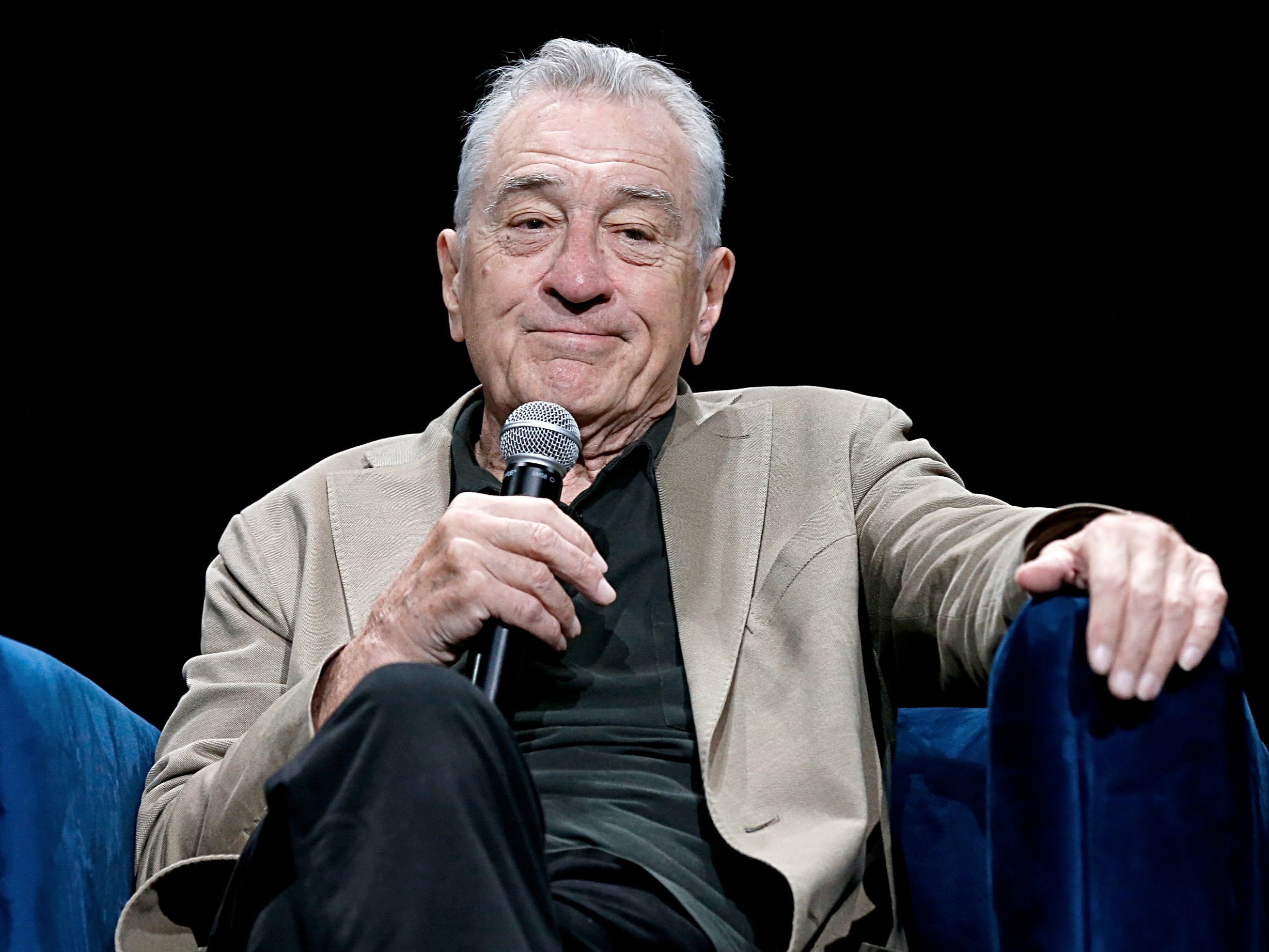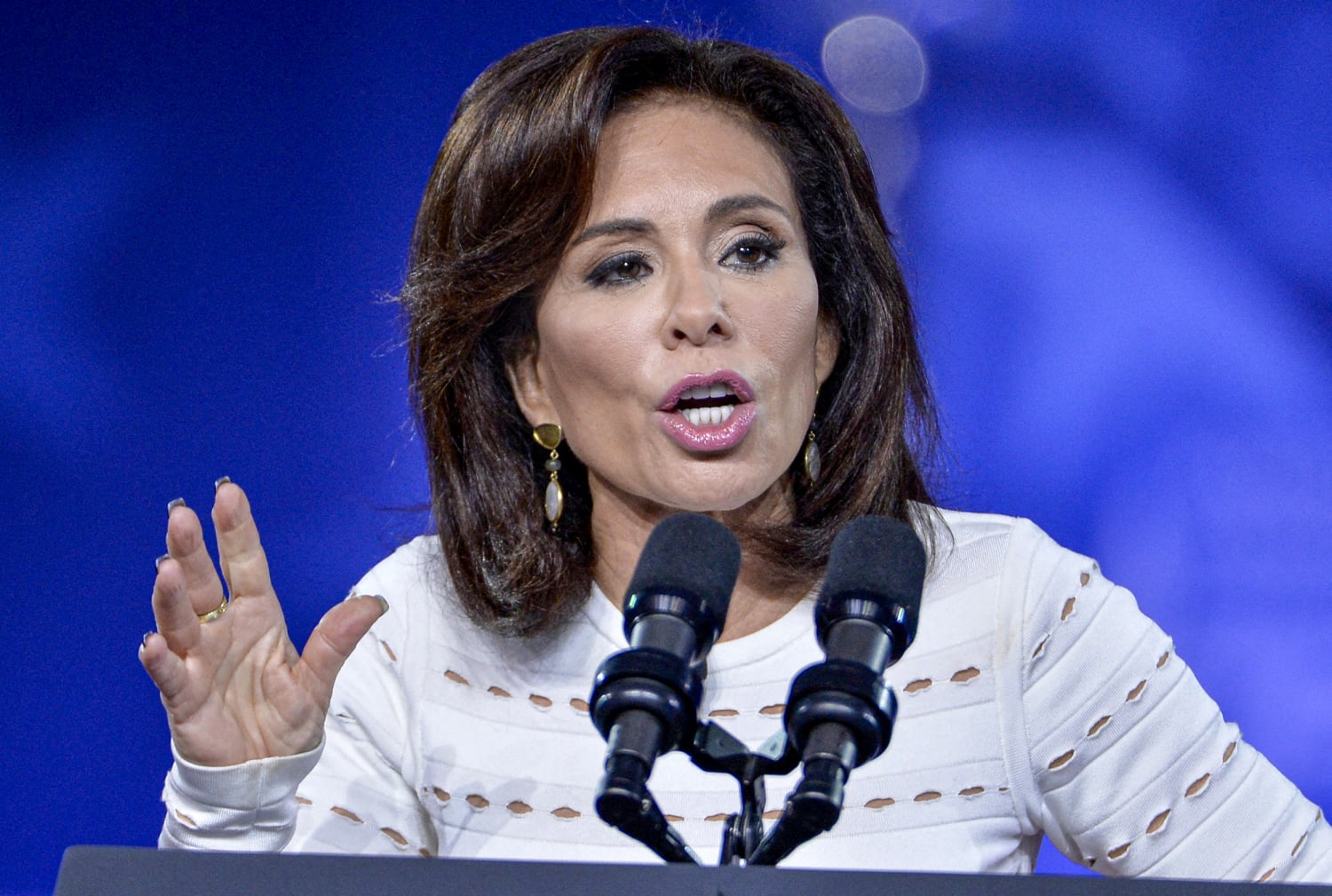Fifth Avenue didn’t literally stop. But inside the studio, it might as well have. Cameras froze. The panelists blinked. And Robert De Niro—normally unshakable—went completely silent.
Jeanine Pirro had just finished speaking. She wasn’t shouting. She wasn’t grandstanding. Her voice was cold, measured, and razor-sharp:
“Robert, you talk a lot about saving New York. But when was the last time you built anything here—besides a narrative?”
It wasn’t just a soundbite. It was a challenge. And in that instant, it was as if the entire conversation about legacy, power, and the meaning of civic responsibility had shifted—because for the first time in a long time, someone had forced Robert De Niro off-script.
Two Icons. Two Americas. One City on the Line.
The confrontation didn’t happen in a courtroom or a film set. It took place during a televised panel in Midtown Manhattan, hosted as part of a wider discussion about New York’s political and cultural direction following former President Donald Trump’s legal battles and rising public discontent across the five boroughs.
De Niro—an outspoken critic of Trump—had been invited to discuss what he saw as a moral crisis in American leadership and its impact on the city he calls home. Pirro, a former judge and Fox News host, was there to counter that narrative, arguing that real civic impact comes not from celebrity pronouncements but from tangible investment.
And what began as a polite exchange quickly escalated into something far more raw and revealing.
The Trigger: De Niro’s “I Love This City” Speech

“I love this city,” De Niro had said just moments before the clash. “I don’t want to see it torn apart by leaders who only care about themselves. Donald Trump’s legacy in New York is destruction. Mine is love.”
There were scattered nods from other panelists. Even the moderator gave a soft “thank you” as if to usher the moment along.
But Pirro wasn’t finished.
“You say you love this city,” she said, eyes fixed on him. “But love isn’t just about saying the right words in front of cameras. It’s about what you build when the cameras are off. So let me ask you, Robert—what have you built?”
Silence.
“What have you personally contributed to New York City that didn’t involve cameras, critics, or the comfort of applause?”
De Niro shifted slightly. The room tensed.
And then Pirro delivered the line that would ignite the internet:
“Trump built towers. You built Twitter threads.”
Legacy on Trial

To understand the full weight of the moment, you have to understand what these two figures represent in the American psyche.
Robert De Niro is not just an actor—he is a symbol of old-school liberal resistance. For decades, he’s used his platform to speak out against corruption, inequality, and, most recently, the Trump administration. His voice carries gravitas. His words carry weight.
Jeanine Pirro is no less polarizing. A former Westchester County judge turned media personality, she’s built her career on confronting what she sees as progressive hypocrisy and defending conservative values with unapologetic force.
But on this night, it wasn’t just politics that collided—it was two competing visions of what influence looks like in the public square.
De Niro’s Record: Words vs. Action
Pirro’s question stung because it tapped into a long-standing criticism of celebrity activism: the perception that it often lacks follow-through.
And yet, De Niro does have a record of engagement in New York beyond rhetoric.
In the wake of 9/11, he co-founded the Tribeca Film Festival to help rejuvenate lower Manhattan—a move widely credited with revitalizing the area’s cultural and economic landscape. He has invested in businesses, restaurants, and arts institutions across the city. He serves on the board of the 9/11 Memorial & Museum. He’s been a visible, vocal part of the city’s recovery efforts.
But to Pirro—and to many watching—those contributions didn’t excuse what she saw as a failure to show up when it mattered most.
“You helped shine a light,” she acknowledged, “but Trump put bricks in the ground. He employed thousands. He transformed skylines. Say what you want about him—but he left something behind you can see.”
The Internet Erupts
Within hours, the segment had gone viral.
Clips of the exchange racked up millions of views. Hashtags like #PirroVsDeNiro, #WhatHaveYouBuilt, and #FifthAveFaceoff trended across platforms.
Supporters of Pirro called it a long-overdue takedown of performative politics. Supporters of De Niro said it was a cheap shot, ignoring the value of cultural leadership.
And then came the wave of media analysis.
CNN’s Don Lemon called the moment “a painful reflection of a growing American divide, where even those who agree on values disagree on what action looks like.”
Fox News praised Pirro for “finally demanding accountability from the Hollywood elite.”
The New York Times called it “the political version of method acting: a clash of personas, both fully committed to their roles, neither willing to blink.”
Behind the Curtain: What Neither Said
Sources close to both camps confirmed that tensions had been building for weeks. De Niro had reportedly requested to speak on the panel following his public remarks outside Trump’s hush money trial, where he accused the former president of “trying to destroy the soul of New York.”
Pirro, aware of the invitation, insisted on appearing as well—telling producers she wouldn’t allow “another one-sided love letter to resistance theater.”
But the real shock was that no one anticipated the temperature in the room would spike so fast, or so personally.
Producers later admitted the segment had not been designed as a debate. It was supposed to be a reflection. But once Pirro took the floor, the tone changed—and so did the stakes.
The Cultural War Within a City
At its core, the Pirro–De Niro clash wasn’t about Trump. It wasn’t even entirely about New York.
It was about influence—who has it, how they use it, and who gets to define what it means to serve a city in crisis.
For De Niro, that influence comes through narrative, visibility, and values. For Pirro, it comes through physical transformation, business ownership, and jobs.
In some ways, they are both right—and both deeply limited by their worldviews.
But in an America that feels more fractured than ever, the conversation has clearly struck a nerve.
A Legacy Still Being Written
Neither Pirro nor De Niro issued statements after the broadcast. But sources close to both say the moment has already shifted internal conversations.
De Niro’s team is reportedly planning to highlight more of his behind-the-scenes efforts—philanthropic, financial, and civic.
Pirro’s staff say she’s preparing a series of segments on “real contributions to American cities,” likely to include new interviews with business leaders and developers.
And viewers? They’re still debating it all—arguing in comment threads, writing op-eds, questioning their own assumptions about who deserves the mic when America’s future is at stake.
Final Thoughts: The Power of a Single Question
It wasn’t rage that made the moment go viral. It wasn’t name-calling. It wasn’t even politics.
It was a question.
“What have you built?”
In that one sentence, Jeanine Pirro did something few figures in modern media manage to do. She reframed the conversation.
And in doing so, she didn’t just challenge Robert De Niro—she challenged everyone watching to rethink what legacy looks like in the city they call home.
The debate isn’t over. In many ways, it’s only just beginning.
Because whether it’s bricks or narratives, speeches or skyscrapers—America is still deciding what it values more.
[Disclaimer:]
This article is based on verified public appearances, published statements, and broadcast footage. It reflects journalistic analysis of a televised debate and includes no fabricated quotes or misrepresented facts. All opinions are presented as attributed commentary or contextual interpretation.
